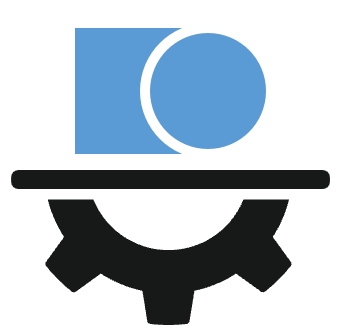
Build

Optimize
Transform


Grow
Use Senova Trace on any initiative to comprehensively track its human impact, employee performance, and learning outcomes. By defining key performance indicators (KPIs) aligned with initiative goals, establishing baseline metrics, and employing learning analytics, you can ensure your performance solutions are strategically aligned, efficient, and effective.
Correlating learning data with business metrics allows for an assessment of the training's effectiveness in contributing to overarching business objectives. Utilizing employee performance analytics helps monitor individual and team performance throughout the initiative. Soliciting feedback from employees provides valuable insights into their perceptions and challenges.
Integrating predictive analytics aids in forecasting potential issues, enabling proactive decision-making. Continuous monitoring ensures ongoing performance tracking, with dashboards and reports offering a holistic view of human impact, performance, and learning data. Fostering a learning culture encourages continuous development beyond formal training programs.
Measuring return on investment (ROI) helps evaluate the overall impact of the initiative. Finally, iterative improvements based on analytics insights enhance both the business growth initiative and corresponding training programs. This approach ensures a dynamic and data-driven strategy to support the desired outcomes of the growth initiative.
By embedding analytics into the DNA of the OD and Learning organization, you cultivate a culture of continuous improvement. Through ongoing analysis and feedback loops, you can iteratively refine processes, optimize performance, and drive sustainable growth over time.

Build
Build
People Capabilities that drive Business Capabilities.
When building or updating training programs, use
Senova Trace
to ensure performance solutions are aligned to business strategy and maximize the quality and effectiveness of human performance solutions.
Job Skills Training • Application/Platform Training
Onboarding • Process Training • Policy Training • Sales Enablement • Regulatory Compliance
People Analytics • Talent Management
Competency Modeling • Capability Modeling
Leadership Development • Turnover Mitigation
xxx


Optimize
Optimize
People Capabilities that drive Business Capabilities.
Use
Senova Trace
on an Optimization initiative to enhance business performance by systematically identifying, understanding, and addressing performance gaps.
- Align performance solutions to strategy
- Identify skill gaps
- Evaluate job performance and identify areas for improvement
- Identify potential enterprise risks and develop human performance solutions

Do all of the examples like this one. Just a simple single-sentence usage declaration and then single sentence Solutions description. And make the type size larger.
Begin by defining key performance indicators (KPIs) aligned with business objectives. Gather collected data, including performance metrics, employee feedback, and customer satisfaction scores.
Utilize Trace for a comprehensive analysis of the data, pinpointing areas of underperformance by detecting trends, patterns, and outliers.
Segment the data for a granular examination, breaking down information by departments, teams, or individual performers. This segmentation provides valuable insights into specific areas where performance gaps may exist.
Conduct root cause analysis to uncover reasons behind performance gaps, employing methods such as interviews, surveys, and additional data collection. Correlate the data against Learning data to uncover training gaps and opportunities.
Prioritize the performance gaps based on their impact on overall business objectives. Develop targeted training solutions, including customized training modules, on-the-job training, and mentorship programs. Continuously monitor KPIs to assess the effectiveness of implemented solutions.

Establish KPIs such as training completion rates and performance metrics to gauge project success. Establish baselines for relevant metrics.
Implement initiative monitoring, tracking training and performance metrics. Utilize employee surveys and sentiment analysis to capture qualitative data on experiences and feedback. Correlate learning data with performance metrics to gauge the practical application of acquired skills.
Identify patterns and trends and adjust training programs in real-time based on analytics findings, addressing gaps or additional support needs. Emphasize continuous improvement by regularly reassessing KPIs and refining strategies.
Post-implementation, conduct a thorough evaluation, comparing metrics with the baseline to measure success. Establish a feedback loop involving stakeholders and communicate analytics findings transparently.
Track the adoption of ERP functionalities post-training. Monitor how well employees are applying their newly acquired skills in real-world scenarios.
Use Senova Trace on a transformation project to assess human impact, monitor performance, and refine training strategies.
See our
Transformation Services
to learn more.

Transform
Transform
People Capabilities that drive Business Capabilities.
Change Strategy • Planning • Impact Analysis
Risk Analysis • Solution Design
Asset Development • Measurement Strategy
Sustainment •
Digital Adoption Solutions

Grow
Create People Capabilities that drive Business
Growth.
Use Senova Trace on a Growth initiative to track and understand its human impact, performance dynamics, and the effectiveness of training interventions. By employing analytics strategically, you gain valuable insights into various facets of the initiative.

Understand Human Impact
Analytics enable you to gauge how the growth initiative affects individuals within the organization. By analyzing data on employee engagement, sentiment, and adoption rates of new processes or technologies, you can assess the human impact of the initiative.
Monitor Performance Dynamics
Analytics provide a lens through which you can monitor performance before, during, and after the growth initiative. By tracking key performance indicators (KPIs) you can identify trends, patterns, and areas for improvement in real-time.
Assess Training Effectiveness
Correlating performance data with learning data allows you to evaluate the efficacy of training programs associated with the growth initiative. By analyzing learning data such as participation rates, completion rates, and knowledge acquisition, you can correlate training efforts with desired business outcomes and business performance.
Identifying Opportunities for Optimization
Through analytics, you can pinpoint areas within the growth initiative where optimization is needed. By identifying bottlenecks, inefficiencies, or gaps in performance, you can make data-driven decisions to refine strategies, adjust training programs, or allocate resources more effectively.

